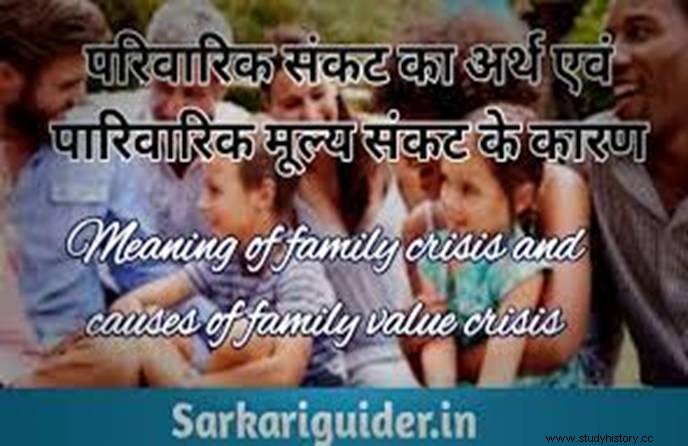
Status of women in Rigvedic-era families
Despite the patriarchal family system in Aryan life, women enjoyed respect and prestige in the home, family and society. She was worthy of reverence like the gods. Many such evidences are found in the Rigveda from which it is known that in intellectual, spiritual and social life, women had the same status as men. She used to take a seat with men in religious functions, social festivals and ceremonies.
As a wife, she was the owner of the family. For her, respectful addresses such as housewife, householder and companion were given. In the Rigvedic period, the birth of a daughter was not considered a matter of concern. Girls were educated. Like sons, daughters also had the Upanayana ceremony and they also studied while observing the fast of celibacy. Girls were educated about the tasks necessary for household life.
In the Vedic age, women like Vishwavara, Ghosha, Apala, Lopamudra, Sikta, Nivavari, Gargi, Maitreyi etc. attained the rank of sages. He composed Vedas and Mantras and participated in debates and meetings like men. In that era, the practice of purdah and sati was not prevalent. Girls could choose their husbands as per their wish. One-wife system was prevalent in the society.
There are also examples of widow-marriage in that era, although this was not a common rule. Widow women had the right to have a son through the system of niyoga. In some special cases, even in the life of the husband, with the consent of the husband, the woman had the right to have a son by the practice of niyoga.
Status of women in later Vedic-era families
There was a slight decline in the status of women during the later Vedic period. The birth of a girl child was considered to be the cause of suffering and the recitation of Veda mantras was stopped at the time of women's rites. The feeling of equality of men and women decreased but the importance of women in the family remained as before. According to Shatapatha Brahmana man himself is not perfect, after marriage the wife makes him perfect.
The authors of the Sutras such as Bodhayana, Vashishta and Gautam etc. considered women to be subordinate to men. Yet his dignity remained in the families. In Mahabharata, woman is considered as the source of Dharma, Artha and Kama and she is said to be the Ardhangini of man. It is written in Manusmriti - 'Where women are worshipped, there the gods rejoice. The family in which a woman is insulted, that family perishes.'
Over time, more controls were imposed on the freedom of women. For them, education was considered unnecessary. Smritis like Manu etc. prohibited the upanayana ceremony of women. This closed the door of education for women. Child marriage is supported in Manu-Smriti.
According to Yajnavalkya Smriti and Narada Smriti, the marriage of the girl should be done before the menses. The girl should not be a revenuela in her father's house. During this period the practice of niyoga and widow-marriage was also banned. The woman did not even have the right to own or purchase property.
Despite strict control over women, women were not considered objects of enjoyment in the later Vedic age. Even in this period, it was considered as the basis of existence and progress of society and family as before.
Status of women in medieval period
The medieval period in the history of India is a period of fierce invasions by foreign invaders. The position of women further deteriorated during this period. In a joint family, daughters were deprived of all rights to education and property. They came to be considered as alien heritage. The main work of women was reduced to serving the members of the family. In the medieval period, women began to be considered an object of enjoyment. To avoid falling into the hands of foreign invaders, practices like Sati-pratha, Jauhar, child-marriage were encouraged in the society and new evil practices like girl-slaughter were born.
Although polygamy was prevalent among kings and wealthy people during the Vedic period, but in the medieval period this practice became very widespread. Polygamy system further degraded the social status of women. Widow-marriage became completely prohibited in the higher varnas. Widow in the family was considered unlucky.
The woman had to cut her hair as soon as she became a widow so that her beauty would be lost. He had to live with restraint like a sanyasi. It was forbidden for him to eat spicy food because it creates libido and bad thoughts in the mind. She could not wear colorful and nice clothes and could not participate in any marriage ceremony. The place of residence of the widow was also kept separate in the family.
Due to being completely deprived of the rights of education and property, the condition of women fell so much in the medieval period that she silently accepted all the restrictions of the male dominated. The old uneducated women of the family, considering themselves to be the protectors of religion, became enemies of their own widowed daughters-in-law.
The woman from whose stomach a son was not born, also had to bear the torture of other women of the family. The elders of the house used to instigate their sons to remarry to get a son.
Due to the rise of purdah system, sati, child marriage, polygamy etc., women in the families of this era did not have the respect which they had received in the Vedic and later Vedic times. Mismatched marriages made life hell for many women as they were often widowed at a very young age and lived a cursed life.
